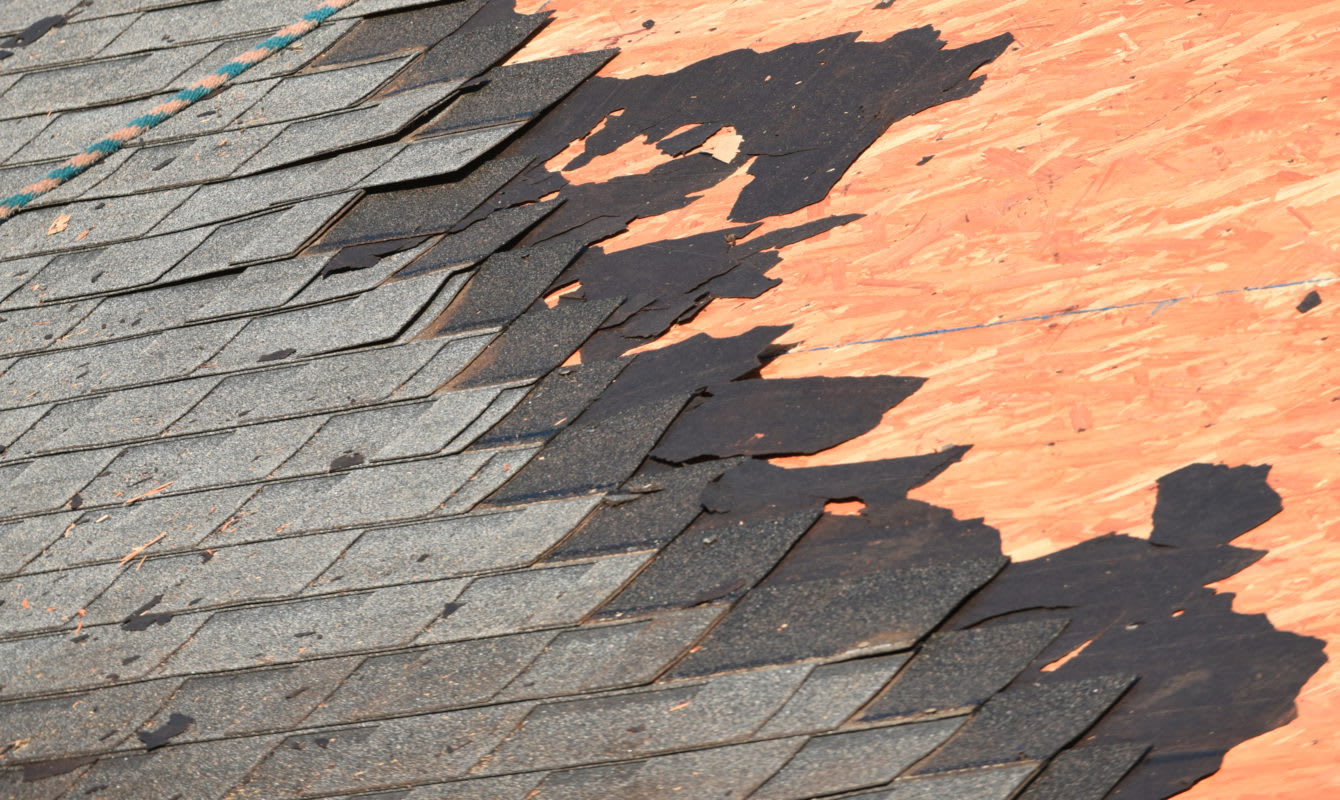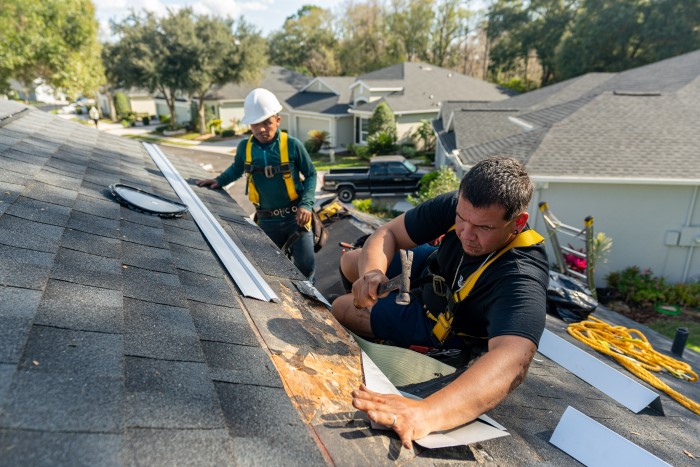Roof Repair Oahu: Expert Roof Repairs for Lasting Defense
Roof Repair Oahu: Expert Roof Repairs for Lasting Defense
Blog Article
Recognizing the Different Kinds Of Roofing Systems: A Comprehensive Guide for Homeowners
In the world of homeownership, choosing the suitable roofing design is a choice that lugs significant effects for both functionality and aesthetic charm. With a variety of alternatives-- ranging from the typical gable to the modern level-- each type offers one-of-a-kind benefits and difficulties that should align with the homeowner's certain demands and ecological factors to consider. Comprehending these differences not only aids in making an informed option yet also affects long-term upkeep and energy efficiency. As we discover the ins and outs of various roof covering types, it becomes evident that one dimension does not fit all; the right option might stun you.
Gable Roofings
Saddleback roofs, identified by their triangular shape, are among the most popular roof covering designs as a result of their simplicity and performance in dropping water and snow. This design features two sloping sides that satisfy at a ridge, permitting reliable drain and reducing the danger of water build-up. The steep pitch typically connected with saddleback roofs improves their ability to manage heavy rainfall, making them suitable for various climates.
In addition to their useful advantages, gable roof coverings provide aesthetic versatility. They can be adjusted to various building styles, from traditional to contemporary homes. The design can additionally suit added features such as dormer home windows, which enhance natural light and air flow in the attic room area.
Additionally, saddleback roofs give sufficient room for insulation, adding to energy effectiveness. Homeowners can choose from a selection of roof products, consisting of asphalt tiles, steel, and tiles, additionally boosting customization options.
Regardless of their advantages, gable roof coverings may call for extra assistance in areas prone to high winds or hefty snowfall. Generally, the gable roof covering stays a preferred choice as a result of its blend of functionality, longevity, and visual allure.
Flat Roofs
Level roofing systems are usually recognized for their minimalist style and sensible applications, particularly in commercial and commercial settings (oahu roofing). These roofings feature a virtually horizontal or straight surface area, which enables for very easy building and construction and flexible area utilization. While they may do not have the aesthetic allure of pitched roof coverings, flat roofing systems use numerous advantages, especially in metropolitan environments where making best use of space is essential
Among the main benefits of flat roofings is their accessibility. Home owners can utilize the roof covering space for different objectives, such as roof yards, terraces, or solar panel setups. In addition, flat roofings are normally extra cost-efficient to install and keep contrasted to their sloped counterparts, as they call for less products and labor.
Usual products made use of for flat roofing systems consist of built-up roof covering (BUR), changed bitumen, and single-ply membrane layers, each offering distinctive benefits. Overall, flat roofings serve as a versatile and useful choice for several home owners and services alike.
Hip Roof Coverings
Hip roofs are defined by their sloped sides that merge on top, forming a ridge. This design stands out from saddleback roofs, as all four sides of a hip roofing incline downwards towards the wall surfaces, providing a much more stable framework. The angle of the inclines can differ, permitting versatility in architectural visual appeals and capability.
One of the primary benefits of hip roofings is their ability to endure hefty winds and unfavorable weather. The sloped surfaces enable much better water drainage, reducing the risk of leakages and water damages. Additionally, hip roofs offer boosted attic room, which can be utilized for storage and even converted into comfortable areas.
Nevertheless, building a hip roof can be more costly and intricate than less complex roofing system kinds, such as gable roofing systems. The additional material and labor entailed in producing the inclines and ensuring correct architectural integrity can result in higher expenditures. In spite of these drawbacks, many homeowners prefer hip roofs for their longevity, visual appeal, and potential over at this website for energy performance.
Mansard Roofings
Mansard roofings, frequently identified by their special four-sided layout, attribute two slopes on each side, with the lower slope being steeper than the upper. This building design, originating from France in the 17th century, is not just visually enticing but practical, as it makes best use of the useful area in the top floors of a building. The steep lower slope enables more clearance, making it an ideal selection for attics or lofts, which can be transformed right into living rooms.
Mansard roofs are identified by their flexibility, fitting various building designs, from standard to contemporary. They can be constructed with different products, including asphalt roof shingles, slate, or steel, supplying house owners with a variety of options to fit their budget plans and choices. Furthermore, the style permits for the combination of dormer windows, boosting all-natural light and air flow in the upper degrees.
Nevertheless, it is important to take into consideration the possible drawbacks. Mansard roofing systems may need more maintenance as a result of the complexity of their layout, and their steep slopes can be testing for snow and rain overflow. In general, mansard roofing systems integrate sophistication with usefulness, making them a preferred option amongst homeowners seeking distinct architectural attributes.
Shed Roofings
As house owners significantly look for simpleness and functionality in their architectural layouts, shed roofs have emerged as a preferred choice. Defined by a solitary sloping aircraft, a shed roofing system offers a minimal visual that complements different home styles, from contemporary to rustic.
Among the primary advantages of a shed roof is its simple construction, which often equates to decrease labor and material expenses. This layout enables efficient water drain, minimizing the threat of leaks and water damage. Additionally, the vertical slope provides enough room for skylights, enhancing natural light within the inside.
Lost roofings also supply versatility in terms of usage. They can be efficiently integrated into additions, garages, or outside structures like sheds and pavilions. Additionally, this roofing style can accommodate numerous roof covering products, consisting of steel, asphalt roof shingles, or perhaps green roofing systems, straightening with environment-friendly initiatives.
However, it is crucial to take into consideration local climate conditions, as heavy snow lots may require modifications to the roof's angle or structure. On the whole, dropped roofs provide a useful and aesthetically pleasing choice for home owners aiming to make the most of capability without jeopardizing design.
Verdict


Gable roofs, identified by their triangular have a peek at this website shape, are among the most preferred roof covering styles due to their simpleness and efficiency in dropping water and snow. oahu roofing. The high pitch frequently connected with gable roofs improves their ability to handle heavy precipitation, making them ideal for various environments
While they may do not have the aesthetic charm of pitched roofs, flat roofing systems supply countless benefits, particularly in urban atmospheres where optimizing room is important.

Report this page